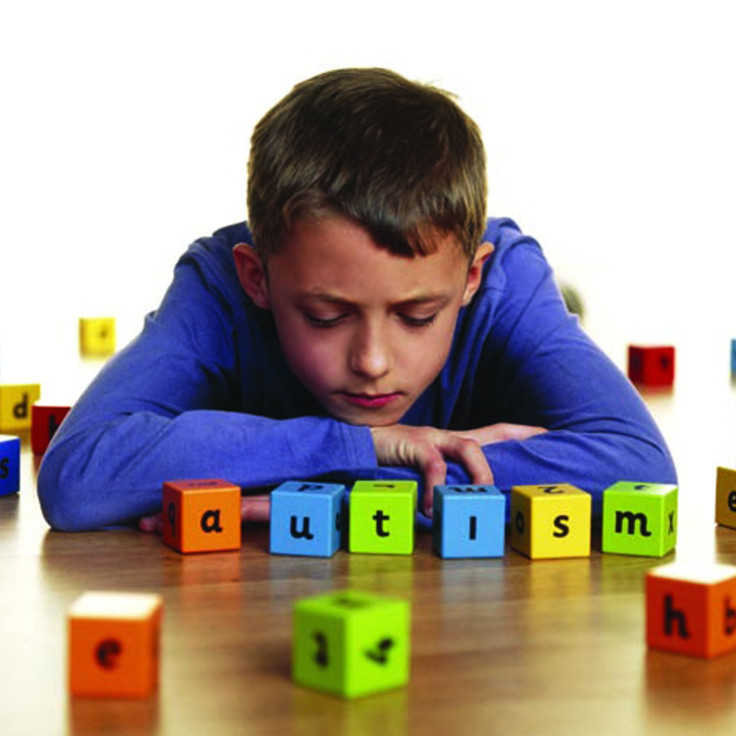Autism, Schizophrenia, And Cognitive Impairment Linked By Single Gene Mutation

New research published in Nature Neuroscience has uncovered a biological link between schizophrenia and intellectual disability in disorders like autism. The investigation is one of the first to reveal the genetic underpinnings of schizophrenia, a psychiatric disease affecting about 24 million people worldwide.
"This is a tremendous discovery for our team; not only have we uncovered vital information about the biology behind schizophrenia, but we have also linked this same biological process to a disorder associated with learning difficulties," said lead author Dr. Aarno Palotie, a geneticist with the Wellcome Trust Sanger Institute, the Broad Institute of MIT and Harvard, and the Institute for Molecular Medicine Finland.
"Our findings offer great hope for future studies into the genetic basis of schizophrenia and other brain disorders, potentially finding new drug targets against them," the study authors write.
Palotie's study was conducted in his home country of Finland, where rates of schizophrenia follow a unique geographical pattern. The northeastern sector of the Scandinavian nation has about three times more people with the neuropsychiatric disease, and the rates gradually drop as one travels in southwesterly direction.
Suspecting a genetic cause for this distribution, 173 randomly selected individuals from northeast Finland were screened for possible mutations. The researchers discovered rare mutations in a gene called TOP3B in 24 of the volunteers. The TOP3B sequence encodes an enzyme that unwinds and winds DNA helices and is essential for normal cell function.
Although this special mutation — a deletion in the DNA region encompassing TOP3B — was only apparent in Finnish schizophrenic populations, and not the rest of the Europe, it is possible that other variants of the TOP3B gene are linked to the disease.
"What is fantastic about this study is that through investigations in an isolated corner of Finland we are contributing to concerted international efforts that are beginning to unravel the genetic root of schizophrenia, a debilitating disorder that affects so many people throughout the world," said co-author Dr. Nelson Freimer, a psychiatry professor from UCLA.
TOP3B, Schizophrenia, and Learning Disability: Connecting The Dots
Next the researchers asked if this mutation was linked to schizophrenia. Patients with the psychiatric disorder, from the northeast and the rest of the country, had higher rates of this mutation than those without the schizophrenia.
They also uncovered that this rare TOP3B mutation was present in a significant number of Finns with intellectual disabilities and those who repeated grades in school.
Further analysis revealed a possible explanation for why this mutation associated with schizophrenia and learning disorders.
Biochemical experiments showed that TOP3B interacts with another protein called FMRP. FMRP is lost in the genetic disorder fragile X syndrome, which is the leading cause of inherited forms of autism and is the most common cause of mental retardation among boys.
"These two disorders, schizophrenia and Fragile X syndrome, although they may seem drastically different, share key features, particularly the cognitive impairment that is frequently associated with both conditions," says Dr. Nelson Freimer, a professor of psychiatry from UCLA and study author. "So, it is not unexpected that they could share some of the same biological processes.
A second study from the U.S. National Institutes of Health, also published today in Nature Neuroscience, outlined an identical relationship between TOP3B and FMRP.
Future research into this alliance between proteins, along with deeper exploration into the function of TOP3B by itself, may open the door to understanding a wide array of psychiatric diseases.
Source: Stoll G, Pietiläinen OPH, Bastian Linder B et al. Deletion of TOP3b, a component of FMRP-containing mRNPs, contributes to neurodevelopmental disorders. Nature Neuroscience. 2013.
Xu D, Shen W, Guo Ret al. Top3b is an RNA topoisomerase that works with fragile X syndrome protein to promote synapse formation. Nature Neuroscience. 2013.
Published by Medicaldaily.com



























